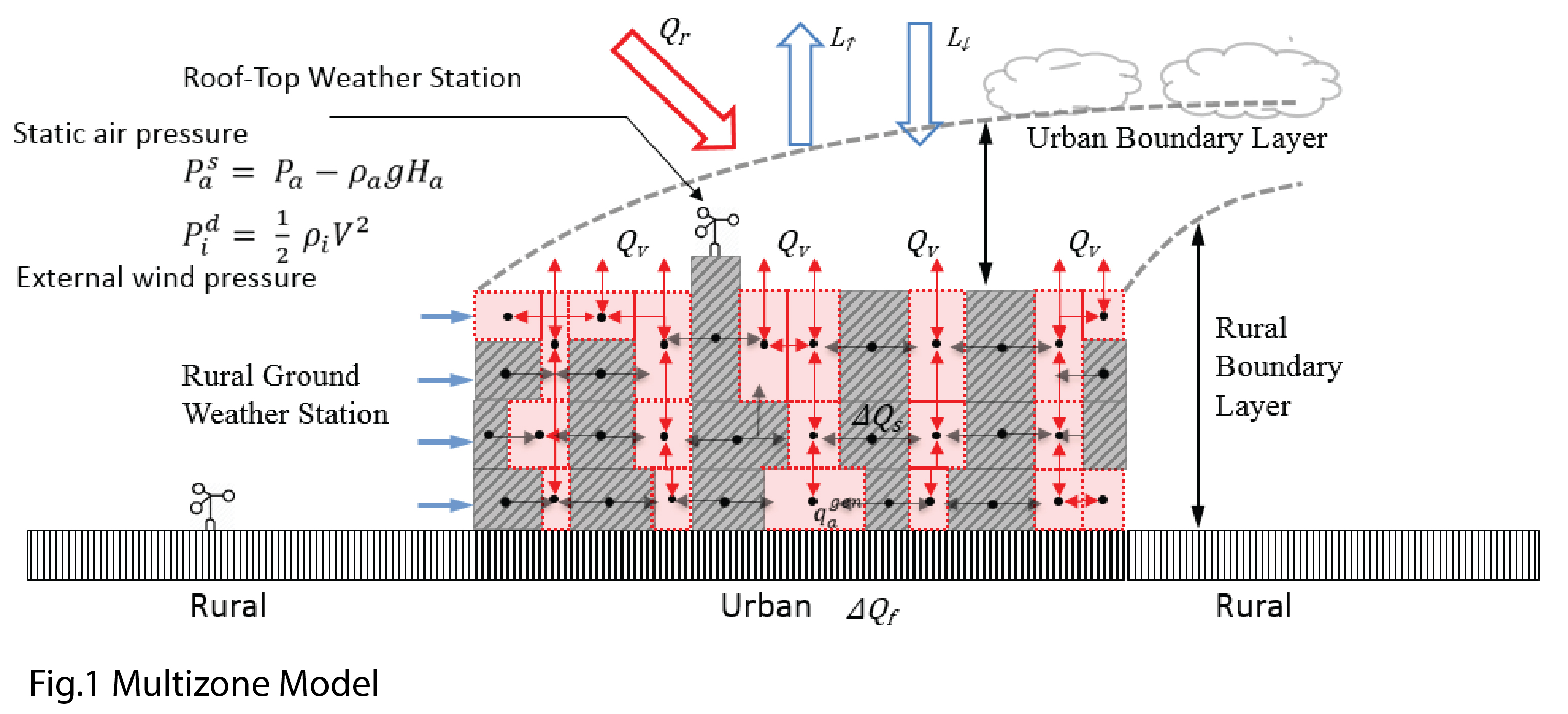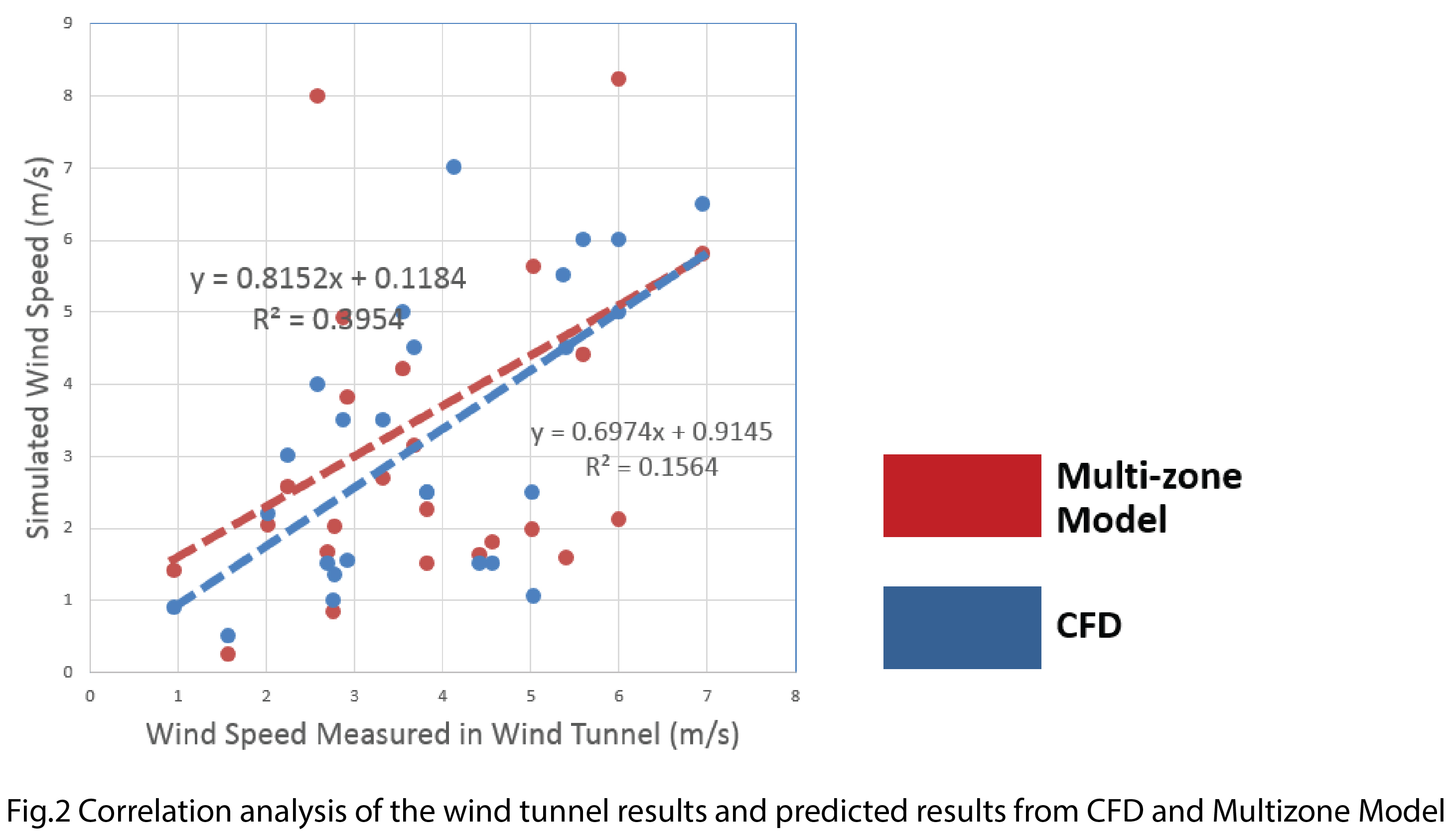A MultiZone Model for Street Canyon Airflow in High Density Cities
People: Jianxiang Huang (HKU), Anqi Zhang (HKU), Rong Peng (HKU)
Stagnant air in high-density urban area imposes a challenge for residents. It may be able to result in the increased Urban Heat Island Effect (UHI), increased building energy use, air pollution concentration and human thermal comfort & health issues. Currently, we don’t have a assessment tool for urban airflow that meet the needs of design and urban planning practices. Barriers lie three-folds: the balance between accuracy and efficiency; the ability to couple with other platforms (solar radiation, building energy, etc.); and allow designers and non-experts to operate with ease.
The research inspiration of this project is aim to find out the ability to couple with other platforms (solar radiation, building energy, etc.), and allow designers and non-experts to operate with ease. We hypotheses that whether if a multizone model can be used in simulating the air flow in high density urban area. And if the answer is yes, what are the criteria (urban density, geometry complexity, and domain size) under which the results are valid.
The paper developed a multizone method to provide a first-cut identification for dense urban areas. Simulated data show good agreements with measurement at points enclosed by building walls, places like alleyways and courtyard. The multizone model can be easily coupled with other simulation platforms to assess buoyancy flow and anthropogenic heat sources in deep urban canyons. And the multizone model may serve as a supplement to the CFD method in high density cities.



